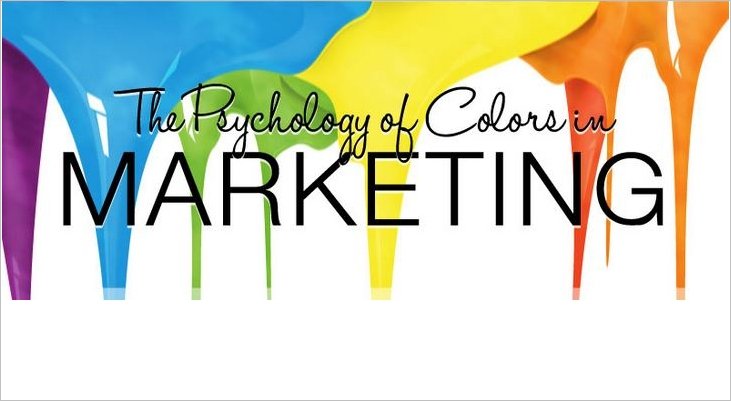
Do you feel serenely calm when surrounded by green fields and blue skies? Have you ever wondered what the color red represents and why you feel slightly alarmed when staring at a stop sign? Those are just two of the many effects color has on the human psyche. It’s all part of a study referred to as the psychology of color.
What is the Psychology of Color?
Color psychology studies how different colors determine human behavior. The psychology of color is used in advertising and marketing to evoke emotional reactions. That sounds simple at first blush, but there’s a lot to unpack in that statement.
Before we look at how color meaning affects human behavior (and how certain colors elicit different reactions), let’s take a quick journey through the history of color.
In the 17th century, Sir Isaac Newton observed sunlight passing through a glass prism and how the light was reflected into various colors. He identified initially six wavelength shades: red, orange, yellow, green, blue and violet. He later added indigo, according to Wikipedia.
But color psychology predates Newton’s time by thousands of years going back to the Egyptians. They studied color’s effect on mood and used color to accomplish holistic benefits.
More recently, Swiss psychiatrist Carl Jung called color the “mother tongue of the subconscious.” His psychological studies led him to develop art therapy. He believed that self-expression through images and colors could help patients recover from trauma or distress.
Have you noticed how colors go in and out of style? In the 1970s, earth tones were popular but gave way in the 80s to turquoise and mauve. Later, pinks and blue-grays came on the scene.
For example, look at the TV series Mad Men, which ran from 2007 to 2015, but whose fictional time frame ran from March 1960 to November 1970. Viewers may recall how color palettes changed over the years. The muted browns and grays of the Eisenhower era succumbed to the bold shades of chartreuse, persimmon, and banana yellow of the late 60s.
How Do Colors in Marketing Influence People?
Color meaning and the psychology of colors can powerfully impact people’s behavior and decision-making. People make subconscious judgments about a person, environment, or product within a few seconds or minutes. Color plays into this initial impression.
That fact is not lost on brands and advertisers. They know certain colors, tints, hues, and shades evoke emotion and move people to action. This effect is both subtle and powerful.
Through their choice of color in logos, packaging, signage, and advertising, brands can influence consumers to buy on impulse, or choose their product or service over a competitor’s.
Think about your favorite brands and how certain colors predominate. Do their logos sport bright red like Target or Netflix? Or are you a person who likes the colors black and white like Nike? Perhaps you prefer yellow and are drawn to Best Buy or Subway.
Color can often be the sole reason someone purchases a product. Research conducted by the secretariat of the Seoul International Color Expo found that 93 percent of buyers focus on visual appearance. And close to 85 percent claim color is a primary reason when they make a purchase!
Let’s take a look at color meaning as it applies to marketing, including the best colors to use. We will also evaluate meaning of colors and examples of branding colors.
Red Color Psychology
The color red creates a sense of urgency, suitable for clearance sales. It also encourages appetite. Thus it is frequently used by fast-food chains. The color physically stimulates the body, raising blood pressure and heart rate. It is associated with movement, excitement, and passion. It gets people to act and is important for call-to-action buttons, for example, on a website.
Red in Marketing: McDonald’s and Target
McDonald’s chooses the high-energy color red (combined with yellow), which appeals to children, kindles appetites, and creates a sense of urgency. This tactic has been great for Micky D’s. It might not have been the same ridiculously big chain it is today without using the color so effectively. Red is all about emotions and passion, which is how McDonald’s wants you to feel about its products. Remember the McDonald’s advertising campaign, “Loving it.”
Target provides another example of the use of the color. Its logo, one of the most widely recognized symbols in North America, grabs customers’ attention. It creates the idea of excitement in shopping there, and the urgency to purchase the brand’s great deals or latest, trendiest merchandise.
Green Color Psychology
This color is associated with health, tranquility, power and nature. It is used in stores to relax customers and promote environmental issues. It stimulates harmony in your brain and encourages a balance leading to decisiveness.
Green in Marketing: Starbucks, John Deere, Whole Foods, and BP
Starbucks is a major global brand that uses this color scheme. Green shows that Starbucks hopes to promote a sense of relaxation in its cafes, inviting customers to come in for a coffee break during a stressful day.
John Deere is another company that uses the color in its branding. This makes sense because the brand is associated with farming and agriculture. John Deere’s color branding is immediately recognizable on its machine in a field or back yard.
Whole Foods also incorporates the color in its logo. The brand is associated with health and nature and prides itself on high-quality, natural, and organic products. In fact, wholesomeness is the very essence of what the company stands for.
Interestingly, BP also uses the color, whether intentionally or not, associating it with the environment.
Purple Color Psychology
This color is commonly associated with royalty, wisdom, and respect in color psychology. It stimulates problem-solving as well as creativity. It is also seen frequently promoting beauty and anti-aging products.
Purple in Marketing: Hallmark, Yahoo, and Craigslist
As the color is associated with royalty and wisdom, it should come as no surprise that the Hallmark logo is depicted with a crown. (And just think of all the wisdom contained in sayings in its greeting cards!)
At the same time, some other quirky brands are associated with this color scheme. Think Yahoo! and Craigslist — two well-known brands with creative names or approaches.
Closer to home, think of the logo on your favorite beauty salon or spa. There’s a good chance the logo or sign includes a pleasing variation of the color, such as lilac, violet, or fuchsia.
Blue Color Psychology
The color blue is the preferred color of men. Its color meaning is associated with peace, water, tranquility, and reliability. And it offers a sense of security, curbs appetite, and stimulates productivity. It’s also the most common color used by conservative brands looking to promote trust in their products.
Blue in Marketing: Honda and American Express
Honda’s brand is all about reliability. A Honda can be trusted (another strong blue suggestion) to run for 200,000 miles or more. American Express uses the color blue to impart feelings of security and stability. These are two of the most important aspects of trusting a company with your money and credit.
Blue is used for social media logos more than any other color. One study suggests several reasons for this. Blue tested as the color of intelligence, communication, and trust. It is also the color most associated with communication in color schemes.
Orange and Yellow Color Psychology
These two colors are cheerful and promote optimism. Yet, you have to be careful when using them in advertising. Yellow can make babies cry, while orange can trigger a sense of caution. At the same time, that discomfort can be used to create a sense of anxiety that can draw in impulsive buyers and window shoppers.
Orange and Yellow in Marketing: Harley Davidson and Snapchat
Harley Davidson uses orange to communicate adventure, excitement, and vitality. These are the fundamental things every motorcycle rider is looking for. Snapchat’s logo is yellow, a break from the usual blue theme of social media. The yellow appeals to their young target audience with ideas of happiness, excitement, and creativity.
Black Color Psychology
While technically not a color (it’s the absence of color because it absorbs light), we think of black as a hue. It is associated with authority, power, stability, confidence, and strength. Often a symbol of intelligence, it can become overwhelming if used too frequently. Black is tricky to use in marketing, but some have done it successfully.
Black in Marketing: Nike and Chanel
Nike’s logo, a combination of black and white, evokes power, strength, and stability. Chanel uses black to convey luxury, elegance, sophistication, timelessness, and maybe a hint of mystery. These prove to be precisely the qualities Coco Chanel created her brand to embody.
Gray Color Psychology
Gray symbolizes feelings of practicality, old age, and solidarity. Too much gray can lead to feelings of nothingness and depression, however. Gray can be uninspiring if it is used too often.
Gray in Marketing: Lexus and Apple
Lexus’s use of light gray suggests high-end, luxury, elegance balanced with stability. It also represents the maturity of those who have achieved in life. Although Apple’s logo is a literal rainbow of colors, it also uses an all gray apple in its branding. So, while innovative and exciting, Apple is also thought-provoking. It is clean in its approach to advancing products of the future as well as today. And is the unparalleled leader in cutting-edge technology.
White Color Psychology
White is associated with feelings of cleanliness, purity, and safety. And it can be used to project an absence of color or neutrality. White space helps spark creativity since it can be perceived as an unaltered, clean slate. It may not be the best color for every business. But using white in marketing can be effective for a minimalist brand or approach.
White in Marketing: Subway and Lego
Subway’s use of white suggests the blank slate concept. It is your sandwich to create, with endless possibilities offered by fresh, clean ingredients. Lego’s brand literally spells out the company name in white on a red background. This represents the fun and excitement children have in playing with a product that provides infinite opportunities for building and creating anything the mind can imagine.
How Colors Affect Mood
Have you ever noticed how colors affect mood? For instance, yellow makes many people feel happy. The color yellow is associated with the sun; hence the use of phrases such as “sunny disposition” or “the sunny side of life”.
Blue has a calming effect such as in “calm seas.” However, the color blue can also evoke a different mood such as sadness, as in “got the blues” or “feeling blue.” It all depends on the context in which it’s used.
Color can elevate one preference over another when making a purchase or following a call to action. Customers may feel that one choice is right, or better, simply because of their color preferences. Color meanings, and color preferences, make a huge difference in the world.
How Color Affects the Brain
Although the ancients believed moods were rooted in the vital organs — heart, liver, gall bladder, and spleen — we know the source lies in another equally necessary organ: the brain.
Neuroscientists have established a direct physiological connection between the effect of color, light, and mood.
None of the psychology colors exploit is lost on brands.
Melissa Hughes, Ph.D., founder of The Andrick Group, a professional development organization, and author of “Happy Hour with Einstein,” describes herself as a “neuroscience geek.” She says that marketers have known for years how effective color psychology and color meanings can be in brand recognition and in attitudes consumers form about products and companies.
“Consider the success of Heinz Squirt Blastin’ Green ketchup in 2000,” she says. “While Heinz has since discontinued this product, more than 10 million bottles were sold in the first seven months resulting in $23 million in sales — the highest sales increase in the brand’s history.”
How to Use Colors in Business
Now that you are an expert at color psychology and color meanings, how do you go about using colors smartly in your business for marketing and advertising? In essence, color reflects the personality of your brand. Follow the steps in this brief tutorial to get started.
Decide on colors that best represent your brand image.
In color theory, red is the color of power. Pink is ideal for reaching the female demographic but usually is not ideal if you want to be gender neutral. Green is warm, inviting, and denotes health, environmental-friendliness, and goodwill. (It’s also the color of money, so it creates thoughts of wealth.) Purple is the color of royalty and adds a touch of elegance and prestige. Orange is energy. Brown is relaxing… and so on.
See what we mean? The choice of colors and emotions they elicit should be your first and most important concern. A poor color choice could impact your brand negatively, so give it plenty of thought before making a decision on brand imagery you will have to live with for a long time.
Pick two main colors
When picking color in branding, we recommend staying with two main colors (not including black or dark gray, which you might use for type). The reason? Your customers will find it easier to remember two colors than three, four, or five.
This idea is particularly important when designing your logo. Think about the color scheme of major brands. FedEx, McDonald’s and Best Buy limit their logos to two colors and built their entire color lexicon around them.
With your color selection decided, let’s look at how you implement it in various marketing and advertising channels.
Website
Obviously, you want the colors of your website to match your logo, which typically appears in the upper left-hand corner. That doesn’t mean you have to retain a strict adherence to those colors, just that they serve as the foundation.
Of course, color choice isn’t limited to your logo, but applies to the products or services you offer as well.
If you’re selling bouncy jump houses, basic color theory suggests you want vibrant colors, such as reds, greens, and yellows. If you run a professional firm, you want more subdued tones and shades — blues and grays, perhaps.
It also depends on your target audience. Women prefer blue, purple, and green, while men opt for blue, green, and black.
Call-to-action Buttons
You likely use call-to-action buttons on your website as a way to generate conversions (i.e., leads and sales), but which colors are best?
The highest-converting are bright primary and secondary colors — red, green, orange, and yellow. Reds are attention-getting. Yellow is commonly associated with warnings (think of “wet floor” signs). Green is best for environmental and outdoor products. Blue is also sometimes used as it denotes trustworthiness. The worst colors are black (gloomy and negative), white (the absence of color), and brown (dull and ugly).
Our best advice is to experiment with different colors and see which result in the highest number of conversions.
Signage
The same color theory that applies to logos and websites also works for signage. The difference is that with signs, you are competing for attention. So it may be in your best interest to use “stand out in the crowd” colors, like red and orange, at least outside. This article, “What are the Best Colors for Signs?” goes into much greater detail and offers some helpful tips.
Vehicle Wraps
Keep the following color associations in mind when thinking about vehicle wraps. In order of priority: Bright Colors > Rich and Dark Colors > Light Colors > Grayscale and Muted Colors. Use this vehicle wrap infographic as a guide.
Social Media Profile Cover Images
Another piece of advice regarding color theory in marketing and advertising involves your social media profile cover image. And it’s quite simple. Use your brand colors, as doing so reinforces your brand image.
That doesn’t mean you have to stick with the two primary colors alone. You can use tints, shades, and tones to vary the intensity but in a complementary way.
On Premises Marketing
Last but not least, color organization can be used on your premises. Examples include different colors for different departments, different color price tags to draw attention to sales, and staff wearing colored uniforms.
Primary, Secondary and Tertiary Colors
A color wheel is the best tool for understanding colors. The most basic form illustrates primary, secondary, and tertiary colors and how they work with or against each other to create color palettes used in art, decorating, and marketing.
Primary colors are the three base colors from which all colors are created. Secondary colors are the three colors created by mixing equal parts of two primary colors. There are six tertiary colors created by combining equal parts of a primary and secondary color.
All other colors — the list is endless — come from combining different amounts and saturations of these colors and, sometimes, adding black or white.
These basic color “categories” are used in developing branding and marketing strategies by employing different combinations to achieve a company’s particular goal, image, and purpose.
Primary
The primary colors are red, yellow, and blue, just like you often see in children’s toys. Primary colors are the foundation of all other colors and are present in the most fundamental of elements that humans experience on Earth: fire, water, and sunshine.
Red is associated with strong emotions, can incite action, and can even cause physiological changes, all of which impact how consumers make decisions.
Yellow is the color of happiness, brightness, and possibility. These ideas spark enthusiasm and draw customers to a product or service. Blue is the color of peace and tranquility. Consumers can trust in the stability and calm of a product using this color.
Secondary
Secondary colors are orange, green, and purple. Orange, the combination of red and yellow, provides the excitement of red with the optimism of yellow. This creates the idea of encouragement and results with positive feelings. It’s something people often look for when choosing brands in any category.
Green, the mixture of yellow and blue, is the color of nature. Fresh and soothing, it is the color of new growth, simple origins, and luck. Customers may intuit an idea of abundance or refreshment from this color too. Purple, the mixture of red and blue, is the color of royalty and magic. It conveys a sense of luxury, imagination, and wisdom, suggesting a brand can deliver the best of the best in what it offers.
Tertiary
A tertiary color is made by mixing an equal amount of a primary color with a secondary color. Examples include aqua or teal which are combinations of blue and green. Magenta is a combination of red and purple. Amber is a combination of yellow and orange.
Tertiary colors play an important role in color psychology because they add deeper and more varied colors to the brand palette.
Tints, Shades, and Tones
Tints, shades, and tones are the result of adding white, black, or gray, respectively, to colors to add or subtract lightness, darkness, and intensity. These color variances keep you from getting locked into the primary colors, serving as a complement.
Tints
Tints result from adding white to color. Tinting creates a lighter color, thus lessening its darkness and intensity.
Shades
Shades are the result of adding black to a color. Shading creates a darker color, decreasing its lightness and increasing intensity.
Tones
Tones are the result of adding gray, a combination of black and white, to a color. Toning decreases or increases the brightness and intensity of color depending on the specific black to white ratio of the gray used.
Warm vs. Cool Colors
Warm colors consist of red, yellow, and orange in various combinations. They are considered warm because they are likened to elements associated with heat, such as fire, sunlight, and lava. They are known to heighten emotions and passions, creating feelings of joy, playfulness, enthusiasm, and creativity.
Home Depot’s use of orange in its logo is the perfect use of warm color associations because warmth and happiness are what everyone longs to have in their home. Frito Lay uses the color meanings of red and yellow to convey anticipation in craving a delicious chip and the satisfaction you feel as you satiate your hunger.
Cool colors are blue, green, and purple, in various combinations. They are thought of as cool because they relate to elements associated with cold, such as water, grass, and trees. These instill feelings of calmness, relaxation, and rejuvenation.
Walmart uses blue in its branding to instill the ideas of trust and conservatism in spending your money. A little bit of yellow imparts the excitement of shopping there, but the overall message is that a consumer will always get the best value for their hard-earned dollars. Green is the color of Sprite, a light, refreshing beverage made from the pure, natural flavors of lime and lemon.
High and Low Contrast
Most aspects of color theory relate to contrast. They include complementary colors, color saturation, and warm or cold colors. For this specific discussion, when referring to high or low contrast, we are denoting value.
Contrast is the difference perceived in colors that are in proximity. Effectively using contrast will set your brand and business apart from all others as well as make the content accessible to every viewer.
Several brands come to mind that make use of contrasting colors. FedEx is a stellar example. Not many people would put orange and purple together in a design. But the combination works perfectly for this recognizable brand.
Complementary Colors
The 12-part color wheel is the easiest and most effective way to understand and use complementary colors. Fundamentally, complementary colors are those that stand opposite to each other on the color wheel.
In their most basic form, they include one primary color and a secondary color created by mixing the other two primaries. For instance, the complementary color to yellow is purple, produced by mixing red and blue.
Fanta uses the complementary colors of blue and orange in an eye-catching way that presents the idea of being cool and refreshing while also being exciting and joyful.
Finally, you will sometimes see the acronyms RGB, CMYK and PMS. These are graphic design terms. RGB is best for digital while CMYK is used for print. PMS (Pantone) is a widely used palette in many different industries.
Best Colors in Marketing
How are you incorporating colors in psychology to create different meanings in marketing and advertising? Are you choosing the best colors possible for your brand, advertising, and marketing materials?
The truth is — as you may have guessed by now — there are no “best” marketing colors. It all depends on the brand image you wish to convey, whether bold, sophisticated, friendly, reliable, or creative, and the response you want to elicit from customers. The choice is yours. One thing is sure. There’s a color, tint, shade, or tone to match every taste, style, and emotion.
If you would like more information about color psychology, see the infographic below.
[Click for larger version]
See another infographic on the psychology of color.
Image Source: Homestead
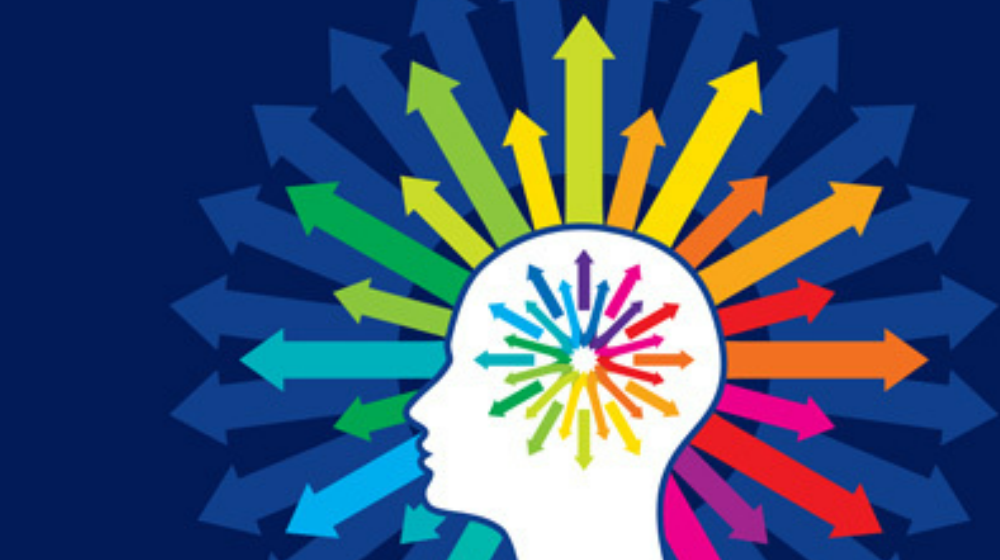


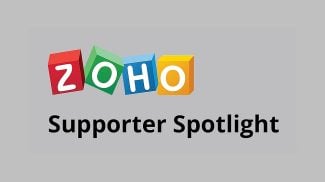
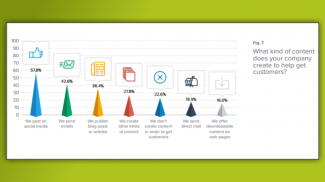
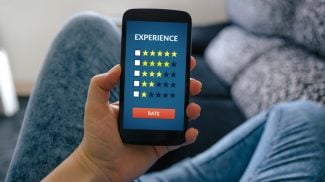
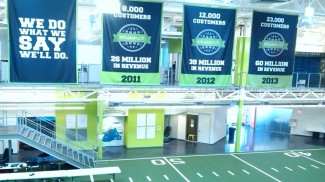

April Sims
Thank you very much for this insightful post. It is amazing what colors tell us about a brand, person, etc.
Martin Lindeskog
Could I have hit a jackpot with my EGO blog banner and logotype, with several colors? 🙂
If you are into colors and and want to check your personality type symbolized with different main colors, play the B.A.N.K. TM code game! 🙂
Evan
Hi Martin,
Could you include a link to this game? I would greatly appreciate it.
Evan,
Check out http mybankcode dot com ForwardSlash discoveryourcode
Aira Bongco
What an interesting article. But I wonder where pink is and what it stands for. Does it mean that it’s too feminine?
Oh well, I guess I have to sort out my brand.
Barbara
I think pink is just a “hue” of red
Jade Davis
This is really interesting! I think it’s amazing what we can assume about a brand just by what color scheme they use. Though, I also think that color will only get you so far. If you don’t have quality content to go with it, then people are going to realize pretty quickly that you’re just a pretty face.
This post is a lot of help for those who are starting their own business and don’t know what colors to use in their logo or the packaging of their products and also this would inform them what colors to use in a specific product
Red and blue are always appealing for me. McDonald’s clearly use red and yellow as it’s appealing for children, which is pretty sinister. It’s not exactly a health spa they’re running. Ronald McDonald (who had a makeover recently to go Hipster) is one of the most terrifying mascots imaginable, but they seem keen to stick with him. It seems to work, whatever they do.
Aira Bongco
I think red is mostly used in food establishment as it somehow triggers hunger. I had that observation in restaurants and fast food joints.
Rapid Boost
This is an amazing in depth article which our whole team enjoyed and we shared it with our clients too. Great information on on colors influence your decisions.
Elsa Anderson
I like how green is stated to be associated with environment and money which can stimulate balance in one’s mind. That should suit me well for being able to have balance and calmness in the mind would make things seem a lot better for me. I better find some emerald jewelry to wear so that I can use it to focus when needed. A ring should probably do the trick. Thanks!
Bloggin Brandi
Interesting look into how colors can influence buying decisions. Who knew red made you hungry or that fast food restaurants are using it all the time. I guess Weight Watchers has a clue with the blue and green to curb appetite and make you think of healthy eating.
Great information, I was stuck with a logo design assignment for an infrastructure company. Choosing the colors had become an issue for me as my client (who has nothing to do with designing) was insisting on using odd colors. I can justify my stand with your resource. Thanks
Wow this is really great article thanks for sharing this, we have also write on COLOUR PSYCHOLOGY IN MARKETING.
This is a really good topic. I love it. I would like to keep the color strategy in content writing work. Let me know this color psychology would also work for the blog reader?
ADWORDS PPC EXPERTS
this is really great article we shared it with our clients too. Great information on on colors influence your decisions.
Amazing Article. Really Useful Information. Enjoyed reading this article. Thanks for sharing this valuable information. Have a Good Day!
Great post thanks for sharing this valuable piece of information with us all. As we all are aware of the fact that how much colors influence people and how much they are important for marketing. Your post clearly provides a clear explanation of how each color have effect on psychology and can be used to influence various customers.
Nice work keep sharing such amazing stuff to enlighten your audiences from time to time.
Wow what a post, I love the writing style like how easily you describe everything in this post. Great information. earlier I was confuse about the color now everything is clear thanks for sharing this kind of information with every one. Keep Writing.
Analis
Black is not the absence of color. That’s white. Black is the combination of all colors. If you’re going to so\peak color theory at least know color theory